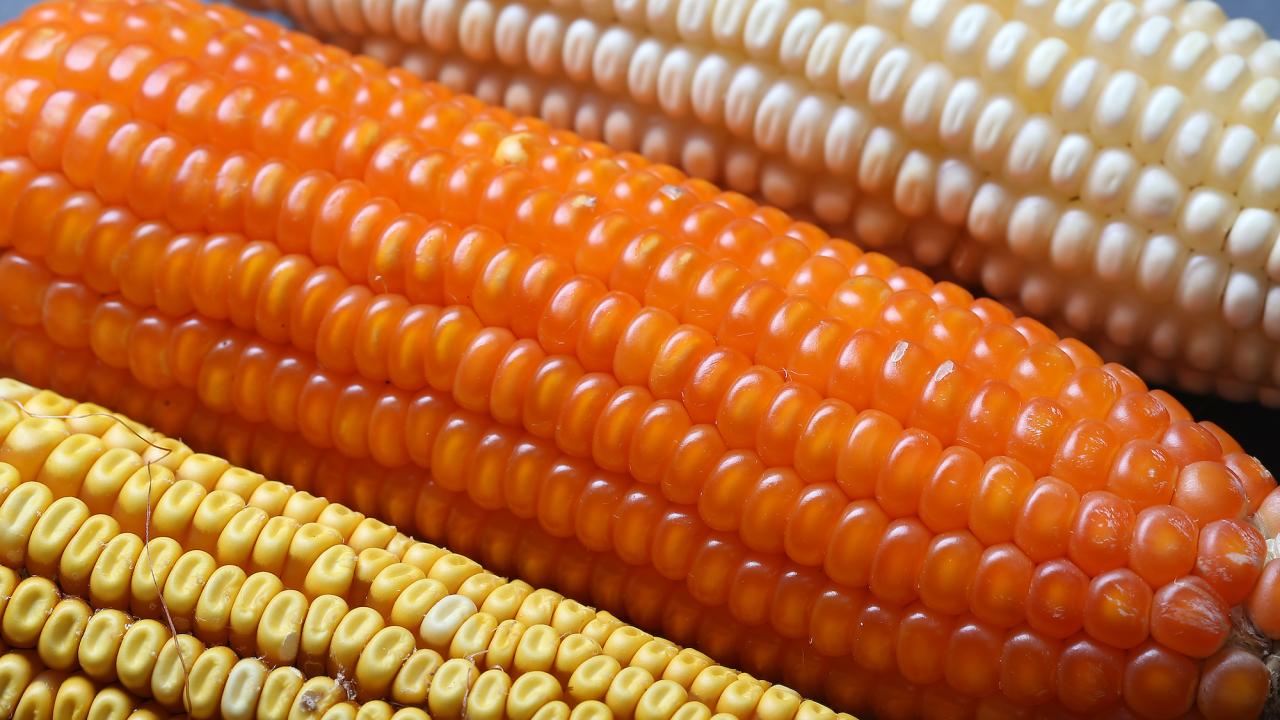Genomic field work
When Mary-Francis LaPorte was growing up in Nebraska, she was surrounded by corn. Now as a quantitative geneticist and graduate student at University of California, Davis, she is studying crop traits in corn. Since she started her Ph.D., supported by a Department of Energy Computational Science Graduate Fellowship (DOE CSGF), people often ask her why she left her home state to study its most famous crop. Her reply: “I went all the way there to study statistics. But corn is cool too!”
LaPorte started out in environmental science as a University of Oklahoma undergraduate. But in those courses, discussions about agriculture’s environmental impact reigned supreme. Refocusing her major to plant biology, she altered cell walls’ genes to discover how the lesser-used parts of common crops, like rice leaves and stems, could be harvested for biofuel. She applied statistics and computer science to the problem and ended up at the University of California Davis to work on a Ph.D. with quantitative geneticist and crop-trait expert Christine Diepenbrock.
In Diepenbrock’s lab, LaPorte works closely with the International Maize and Wheat Improvement Center, which has been responsible for developing half the world’s corn and wheat varieties, and with the Arkansas Rice Breeding Program to help farmers predict their plants’ traits.
New crop varieties are always being discovered and developed, and researchers look for ways to enhance desired traits. Plant breeders can choose from thousands of viable crop varieties, too many to test individually, so researchers try to predict how each variety will hold up across the world’s diverse climates.
With corn, plant breeders want to select plants that include genes to biofortify, or boost the nutritionally relevant compounds, with carotenoids – molecules that humans digest into vitamin A. This is an effort by breeders to supply the developing world, where corn is a major dietary staple, with a source of vitamin A. Their process produces varieties that include orange corn.
Producing this unique corn involves forcing well-known plant genes to produce carotenoids from corn’s 32,000 genes. For each plant species, La Porte used machine learning algorithms to track 900,000 nucleotides as a matrix of genetic information to predict the carotenoid concentrations in the maize grain.
Her calculations have predicted the plants best suited for farmers’ needs, helping breeders winnow their choices to a more reasonable amount, such as from thousands to hundreds.
LaPorte is working on a similar project with rice to predict how gene interactions between rice varieties and environmental conditions such as temperature and rainfall might affect production. She is introducing farmers’ data from previous seasons about how each rice plant breed grew, data which includes crop traits and environmental growing conditions, alongside the genetic predictions.
During a 2022 practicum at the National Renewable Energy Laboratory, she worked with Ambarish Nag on software to explore the proteins in algae that relate to salt stress tolerance.
Outdoor algae farms are prone to evaporation. Lack of water can stress plants. A plant with water stress, LaPorte says, also has salt stress. Upon identifying salt stress proteins, LaPorte and Nag realized they had enough material to develop an app. She extended her lab stay with an internship, deepening her skills in data visualization and analysis, and her biofuel expertise.
Beyond research, LaPorte helps other biologists polish their computational skills. She regularly teaches programming and data analysis workshops at The Carpentries, a California data science coding nonprofit.
As she completes her Ph.D., she plans to continue in research, whether at a national lab, university or company. She is open to working with any crop, although her NREL research heightened her interest in algae. All the while, she remains motivated by plant breeding projects with applications for biofuels and human nutrition.
About the Author
The author is a science writer and journalist based in New York City.






You must be logged in to post a comment.